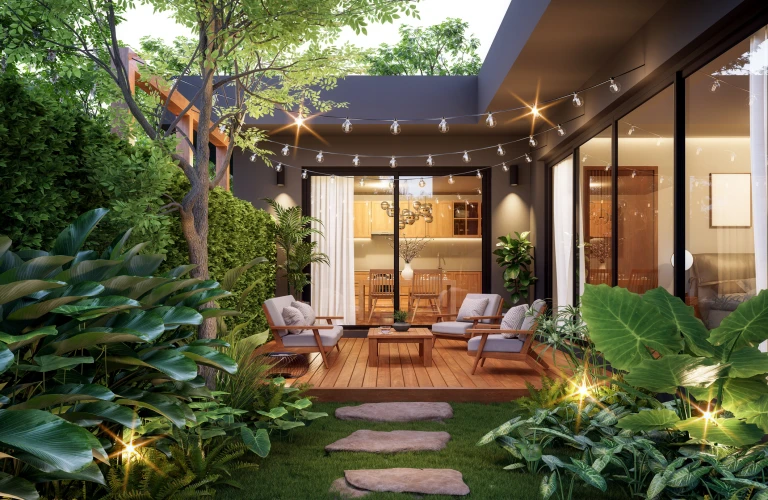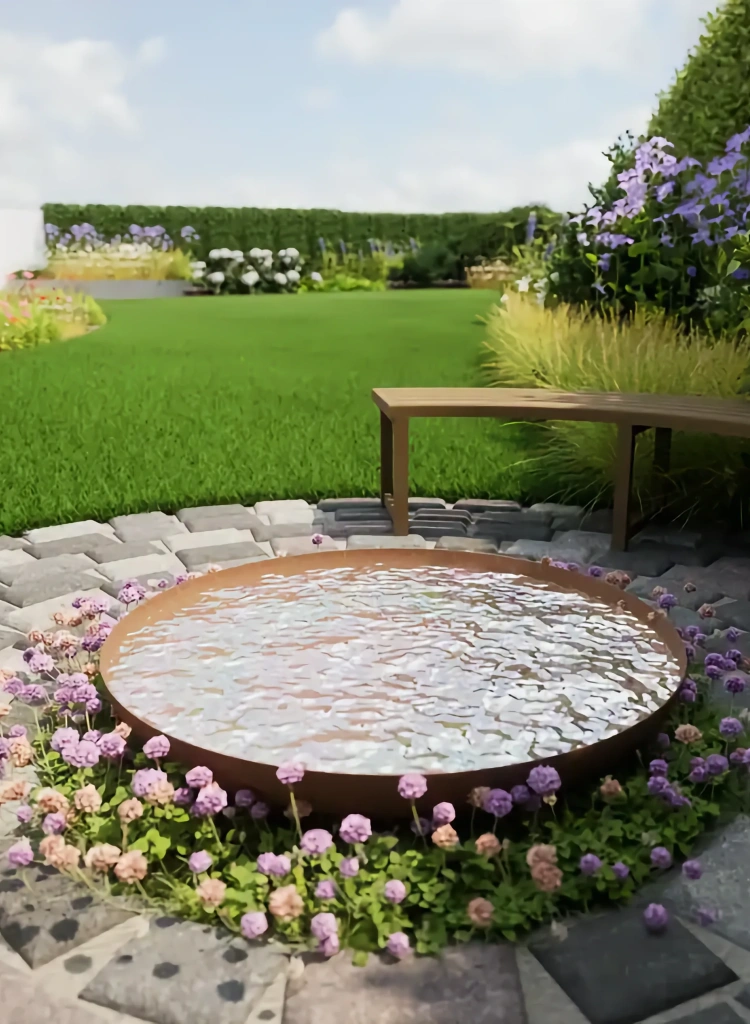
How to Design a Garden for Every Season: Expert Tips for Year-Round Beauty
Designing a landscape that looks good in every season is essential for creating an appealing and vibrant outdoor space. By carefully planning and organizing different zones within your garden, you can ensure that there is always something Instagram-worthy to capture and share with your followers. A year-round garden not only adds beauty to your property but also provides a constant source of interest and enjoyment throughout the year. Whether it’s the changing season landscape, different zones within your garden, or sharing stunning photos on Instagram, there are many ways to appreciate and showcase the diverse elements of your garden. If you’re wondering how to achieve the perfect garden room, look no further. By creating distinct zones in your garden, such as an Instagram-worthy perennial garden, you can transform your outdoor space into a stunning oasis. In this guide, we will provide you with practical suggestions and step-by-step examples to help you plan and design a captivating landscape that remains visually stunning in all seasons. Whether you’re creating different zones within your garden or showcasing it on Instagram, these tips will ensure your garden is always picture-perfect.
Gardening involves careful consideration of various elements, from choosing the right plant species for each season to creating a well-thought-out framework for your garden landscape. By selecting plants that thrive in different zones, you can ensure year-round season interest and create a stunning garden that will make your Instagram feed shine. We will walk you through the necessary steps to create a beautiful perennial garden. This includes selecting focal points, planning for different seasonal blooms, and incorporating evergreen plants. Whether you have a small or large garden size, our tips will help you design a stunning landscape. With our guidance, you can create a garden room that is both visually appealing and easy to maintain. By following our expert advice and implementing these strategies, you can create a stunning garden that remains attractive no matter the season. With carefully chosen plants and a well-planned landscape, your garden will have year-round interest. Consider different zones within your garden that cater to the changing seasons. And don’t forget to share your beautiful garden on Instagram for everyone to admire.
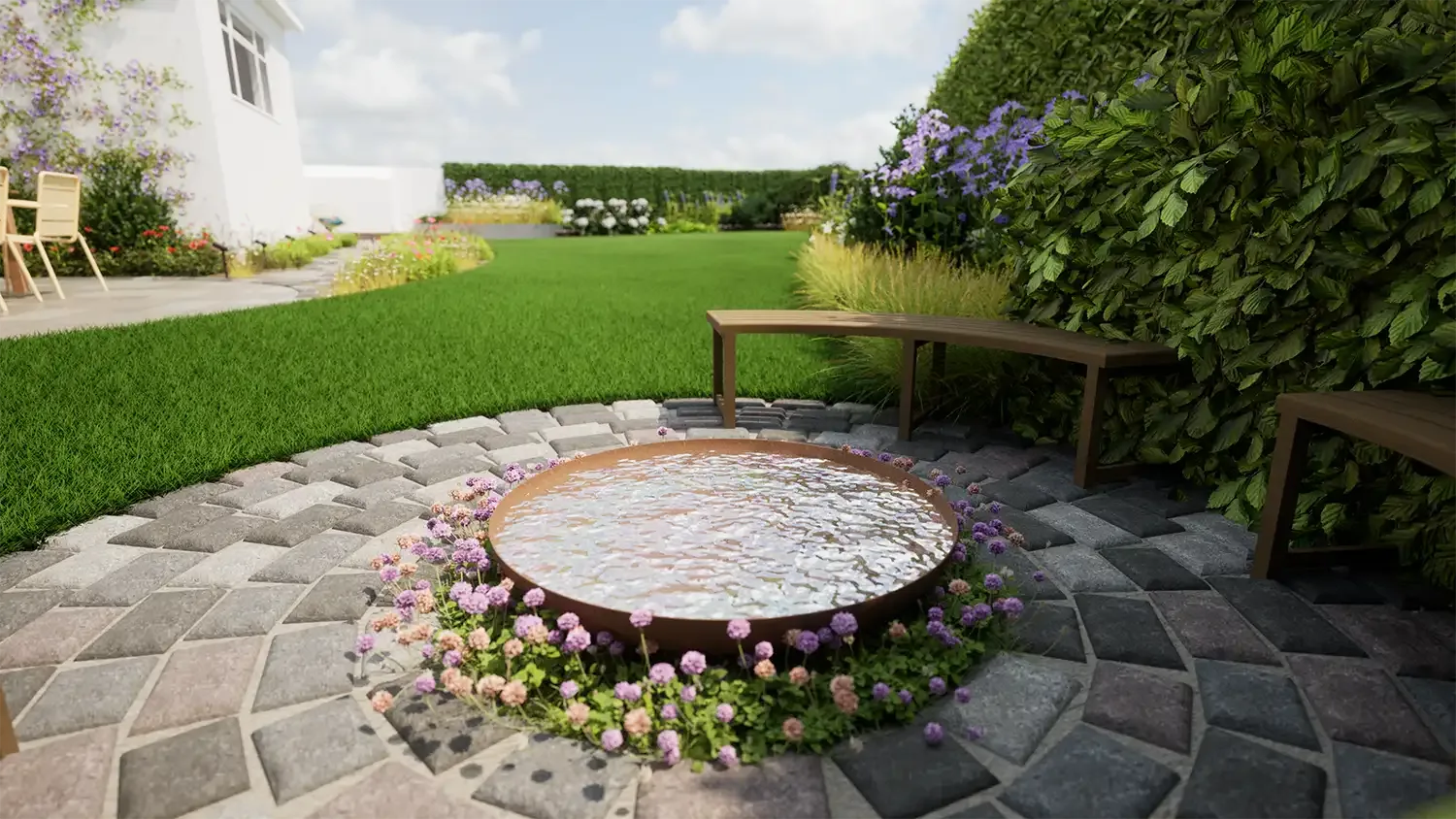
Understanding Garden Design for All Seasons
When designing a landscape that looks good in every season, there are several key elements to consider. Creating different zones within the garden can help enhance its overall aesthetic and make it more visually appealing throughout the year. The selection of plants, the layout of the garden, and the overall design can all play a role in creating a year-round oasis with season landscape, season interest, and zones. Let’s explore these factors further.
Elements to Consider when Designing a Garden for All Seasons Designing a garden that can be enjoyed throughout the year is a goal for many gardeners. By choosing the right mix of perennial flowers, you can ensure that your garden stays vibrant and colorful no matter the season. Working with a landscape designer can help you create a garden that is both visually appealing and practical for every season.
One important factor to consider when planning your garden is the size of your landscape. It is crucial to determine the appropriate zones for different plants and ensure that there is season interest throughout the year. Whether you have a small or large garden size, it’s crucial to make the most of it by incorporating different elements like a perennial garden that provide seasonal interest throughout the year. Whether it’s a garden room or a landscape, these elements can transform your space. By carefully planning and utilizing various landscape features such as pathways, seating areas, and focal points, you can create distinct garden rooms that showcase different aspects of each season.
Another aspect to keep in mind is consulting with a landscape designer who specializes in creating gardens for all seasons. Their expertise can be invaluable. A professional designer will take into account factors such as garden size, season landscape, and season garden course to ensure optimal plant selection. They consider soil type, sunlight exposure, and climate conditions.
The Role of Plant Selection in Creating a Year-Round Garden for many gardeners and landscape designers. Plant selection plays a crucial role in creating a year-round garden that satisfies the needs of many gardeners. By carefully choosing a variety of perennial flowers, gardeners can ensure that their gardens remain vibrant and colorful throughout the seasons. With the guidance of a skilled landscape designer, the right combination of perennials can be selected to create a stunning and ever-changing landscape.
Choosing the right plants is essential for achieving a visually appealing landscape that remains stunning throughout the seasons. Opt for a mix of evergreen shrubs and trees in your garden to create a beautiful season landscape. Alongside these, incorporate perennials and annuals that bloom at different times throughout the year. This will enhance the garden size and provide variety in your garden course. This combination ensures there is always something vibrant happening in your garden, no matter the season or landscape.
Consider including plants with interesting foliage or bark that adds texture during the winter season in your garden. This will enhance the overall landscape and make up for the scarcity of flowers during that time. No matter the size of your garden, incorporating these elements will bring a unique touch to your space. If you’re looking to learn more about how to design a season garden, consider taking a garden course that focuses on this topic. Select species that offer autumnal colors or early spring blooms to bring bursts of vibrancy to the landscape during transitional periods between seasons, regardless of garden size.
How Garden Design Can Impact Seasonal Interest
The overall design of your garden landscape plays an integral role in maintaining seasonal interest throughout the year. Incorporating structural elements such as trellises or archways can provide support for climbing plants or vines, adding vertical interest to your garden’s landscape during any season. Including water fountains or bird feeders in your garden can attract wildlife, adding life and movement to your garden. Whether you have a small or large garden, these features can enhance your season landscape. Consider incorporating them into your season garden course.
Strategic placement of plants with varying heights and textures creates depth and visual appeal in the landscape season. Grouping plants with similar blooming periods together in a landscape can create focal points that change throughout the seasons. Using hardscaping elements such as rocks or decorative paving can add interest to the landscape during winter months when plant growth may be limited.
Choosing Plants for Year-Round Interest
When designing a landscape that looks good in every season, selecting the right plants is crucial for a garden. When creating a year-round garden, it is important to consider various factors that will contribute to the overall landscape. One of these factors is choosing the right plants.
Factors to Consider When Selecting Plants for a Year-Round Garden When designing a year-round garden, it’s important to consider the different seasons and how they will affect the landscape. One way to ensure that your garden looks beautiful throughout the year is to incorporate hardscaping elements. These can provide structure and interest even when plants are not in bloom. However, it’s also important to select plants that will provide season interest. By choosing a variety of plants that bloom at different times throughout the year, you can ensure that your garden always has something
To ensure your garden landscape remains visually appealing throughout the year, it’s important to select plants with different seasonal characteristics. Look for plant types that offer interest in the landscape during each season, including spring, summer, autumn, and winter. Consider the following factors when making your selections:
- Bloom Time: Choose plants that bloom at different times of the year to maintain color and visual interest throughout the landscape seasons. For example, daylilies bloom in the summer landscape, while tulips and daffodils bring vibrant colors to your garden in the spring landscape.
- Foliage: Opt for plants with interesting foliage that can provide visual appeal even when they are not blooming in the landscape. Coral bells (Heuchera) are known for their attractive foliage in shades of green, purple, or bronze, making them a popular choice for landscape design.
- Fall Interest: Select plants that offer stunning fall foliage colors or produce berries or seed heads during autumn in the landscape. Japanese maples enhance the landscape with their vibrant red and orange leaves in the fall, bringing warmth and beauty to your garden.
- Incorporate evergreen trees and shrubs into your landscape design to maintain greenery and structure during winter months when other plants may be dormant.
- Landscape Variety: Aim for a diverse range of plant species with varying heights, textures, and forms to create an aesthetically pleasing and balanced plant palette in your landscape.
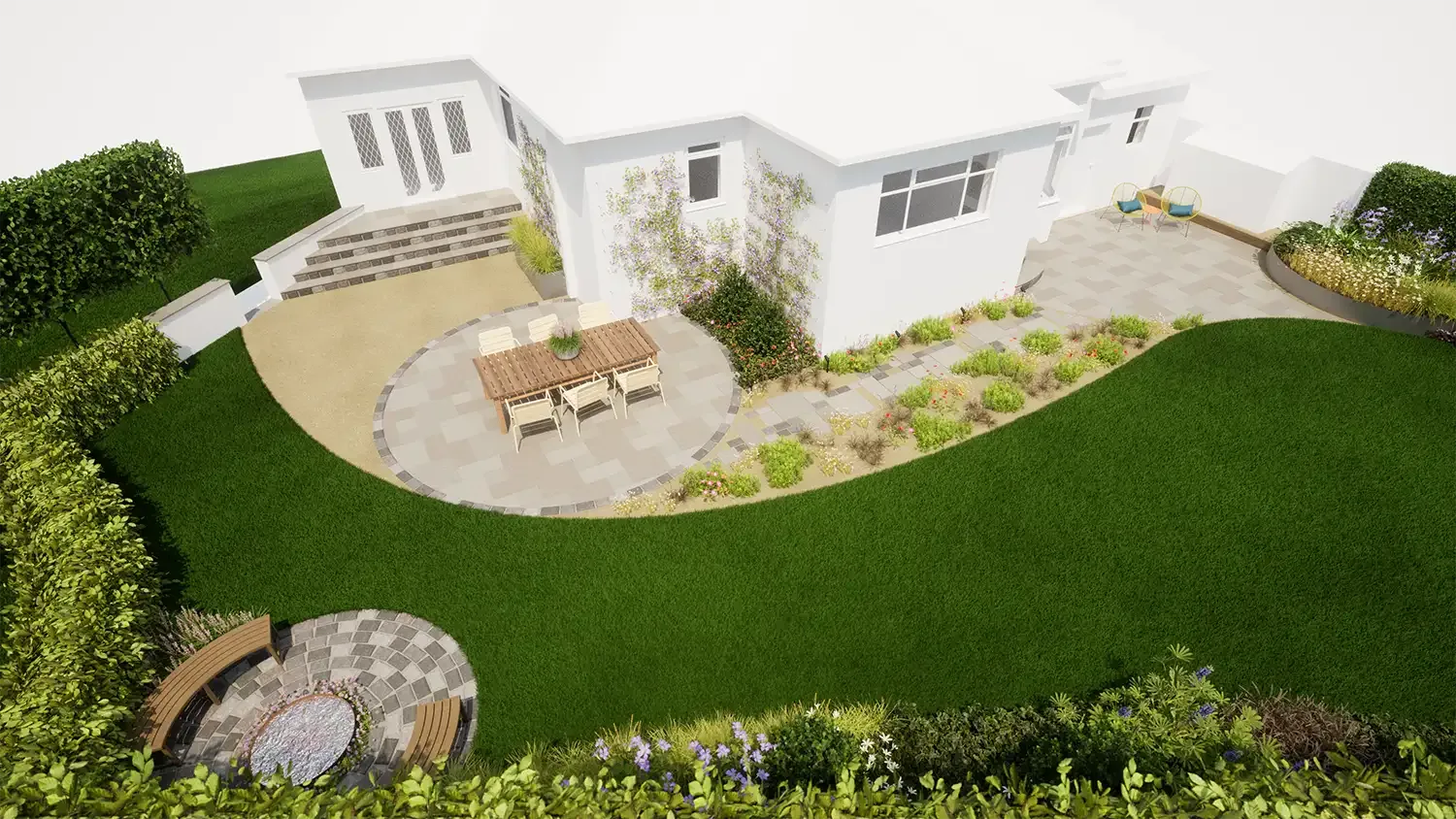
Examples of Plants with Different Seasonal Characteristics
Here are some examples of plants that provide interest in the landscape during different seasons.
- Spring: Tulips, daffodils, lilacs
- Summer: Daylilies, coneflowers (Echinacea), hydrangeas
- Autumn: Japanese maples, ornamental grasses, asters
- Winter: Evergreen trees and shrubs, hellebores
By incorporating these landscape plants into your garden, you can create a visually appealing landscape that transitions seamlessly from one season to the next.
Tips for Creating a Diverse and Balanced Plant Palette
To ensure your landscape has year-round interest, consider the following tips when designing your plant palette for your garden.
- Research: Familiarize yourself with different plant species and their seasonal characteristics. Look for inspiration in gardening books, magazines, or online resources.
- Plan Ahead: Create a planting plan that considers the bloom times and growth habits of selected plants. This will help you achieve a well-balanced garden design.
- Layering: Use layering techniques by incorporating plants of varying heights to add depth and visual interest to your garden beds.
- Consider Native Plants: Native plants are often well-adapted to local climate conditions and can provide year-round interest while supporting local wildlife.
- Maintenance: Regularly maintain your garden by pruning, deadheading spent blooms, and removing any diseased or damaged foliage to keep it looking its best throughout the year.
By carefully selecting a variety of plants with different seasonal characteristics and following these tips, you can design a garden that looks good in every season.
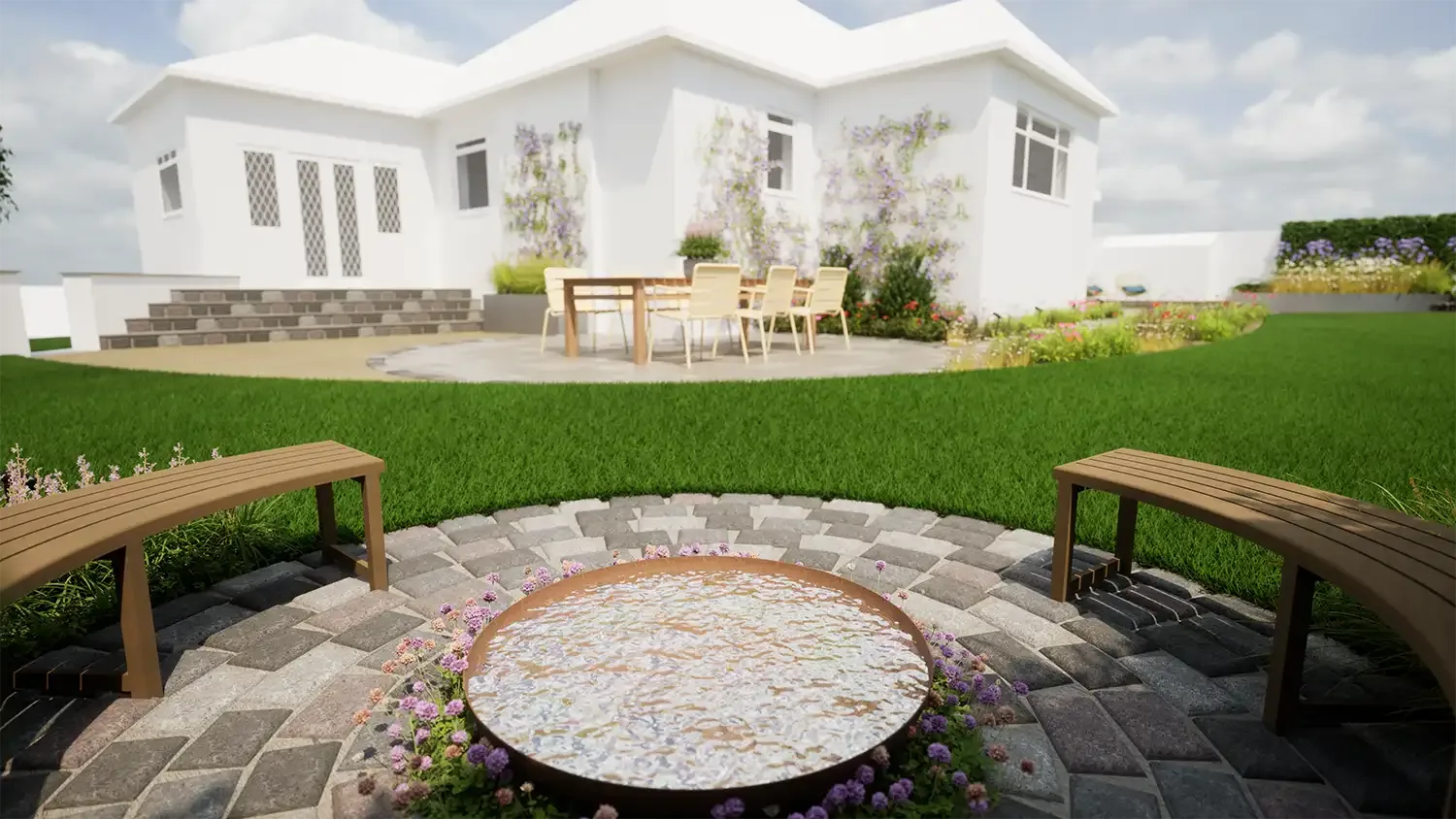
Creating a Four-Season Garden Plan
To design a garden that looks good in every season, it is important to create a comprehensive garden plan. This involves several steps that will help you balance seasonal interest throughout the year and incorporate different plant types and features into your design.
Steps in creating a comprehensive garden plan
- Assess your space: Start by assessing the available space in your garden. Consider factors such as sunlight exposure, soil type, and drainage. This will help you determine which plants are best suited for your garden.
- Research plant options: Conduct research on plants that thrive in each season. Look for varieties that offer visual interest through flowers, foliage, or berries during different times of the year. Consider both perennial and annual plants to ensure continuous blooms throughout the seasons.
- Create a planting schedule: Once you have selected suitable plants for each season, create a planting schedule. This will help you stagger the planting times so that there is always something blooming in your garden.
- Consider structural elements: In addition to plants, incorporate structural elements into your garden plan to provide interest during all seasons. This could include features such as pathways, trellises, or water features that add visual appeal even when plants are not in bloom.
Balancing seasonal interest throughout the year
To ensure your garden looks good in every season, it is important to balance the overall visual impact throughout the year. Here’s how:
- Focus on key focal points: Identify key focal points within your garden where you want maximum impact during specific seasons. For example, choose vibrant flowering shrubs near entrances or patios to create eye-catching displays during spring or summer.
- Create color schemes: Develop color schemes for each season to ensure harmonious transitions between them. Choose complementary colors or variations of hues within the same family to create a cohesive look throughout the year.
- Consider plant textures: Incorporate a variety of plant textures to add visual interest in every season. Mix plants with different leaf shapes, sizes, and textures to create a dynamic and captivating garden.
Incorporating different plant types and features into the plan
To design a garden that looks good in every season, you need to incorporate different types of plants and features. Here’s how:
- Use evergreen plants: Include evergreen plants in your garden plan to provide year-round structure and greenery. These plants will act as a backdrop for seasonal blooms and ensure your garden remains visually appealing even during winter.
- Include bulbs: Plant bulbs that bloom at different times throughout the year to add pops of color during various seasons. Daffodils and tulips are popular choices for spring, while crocuses and snowdrops can provide early blooms in late winter.
- Add ornamental grasses: Ornamental grasses can add texture, movement, and interest to your garden during all seasons. Choose varieties that offer different colors or interesting seed heads that last through the winter months.
By following these steps and incorporating a diverse range of plants and features into your garden plan, you can create a beautiful space that looks good in every season.
Structuring Gardens with Evergreens and Perennials
Benefits of Using Evergreen Plants in Garden Design
Evergreen plants are a fantastic addition to any garden as they provide year-round interest and structure. These plants retain their foliage throughout the seasons, ensuring that your garden remains visually appealing even during the colder months. By incorporating evergreens into your garden design, you can create a backdrop of lush greenery that serves as a canvas for other seasonal blooms.
One of the main advantages of using evergreens is their ability to add texture and depth to your garden. Their foliage comes in various shapes, sizes, and shades of green, allowing you to introduce different layers to your landscape. For instance, tall evergreen trees can provide shade and privacy while smaller shrubs or groundcovers can be used to fill in gaps or create borders.
How Perennials Contribute to Year-Round Interest
Perennials are another essential element when designing a garden that looks good in every season. Unlike annuals which need replanting each year, perennials come back year after year, providing consistent beauty and colour. Many perennials have long blooming periods, ensuring that there is always something eye-catching in your garden.
To achieve year-round interest with perennials, it’s important to select a variety of plants with staggered bloom times. This way, you’ll have flowers blooming at different points throughout the seasons. Consider choosing perennials with interesting foliage or seed heads that can add visual appeal even when not in bloom.
Techniques for Incorporating Structure and Texture into the Garden
Creating structure and texture within your garden is crucial for achieving a visually pleasing space all year round. One technique is landscape layering – placing plants with varying heights from tall trees to low-growing groundcovers – this adds depth and dimensionality to your garden design.
Hardscaping elements such as pathways, walls, or trellises can also contribute to the overall structure of your garden. These features not only provide visual interest but also create focal points and define different areas within your outdoor space.
When selecting plants for texture, consider those with interesting foliage, such as grasses or plants with variegated leaves. These add visual interest and contrast to your garden design. Incorporating different shapes and forms of plants, such as spiky or rounded varieties, can further enhance the texture of your garden.
Incorporating evergreens and perennials into your garden design is a surefire way to create a visually appealing space that looks good in every season. By utilising their benefits, you can achieve year-round interest through structure, texture, and an array of beautiful blooms. So get creative with your plant selection and start designing a garden that will bring joy throughout the year!
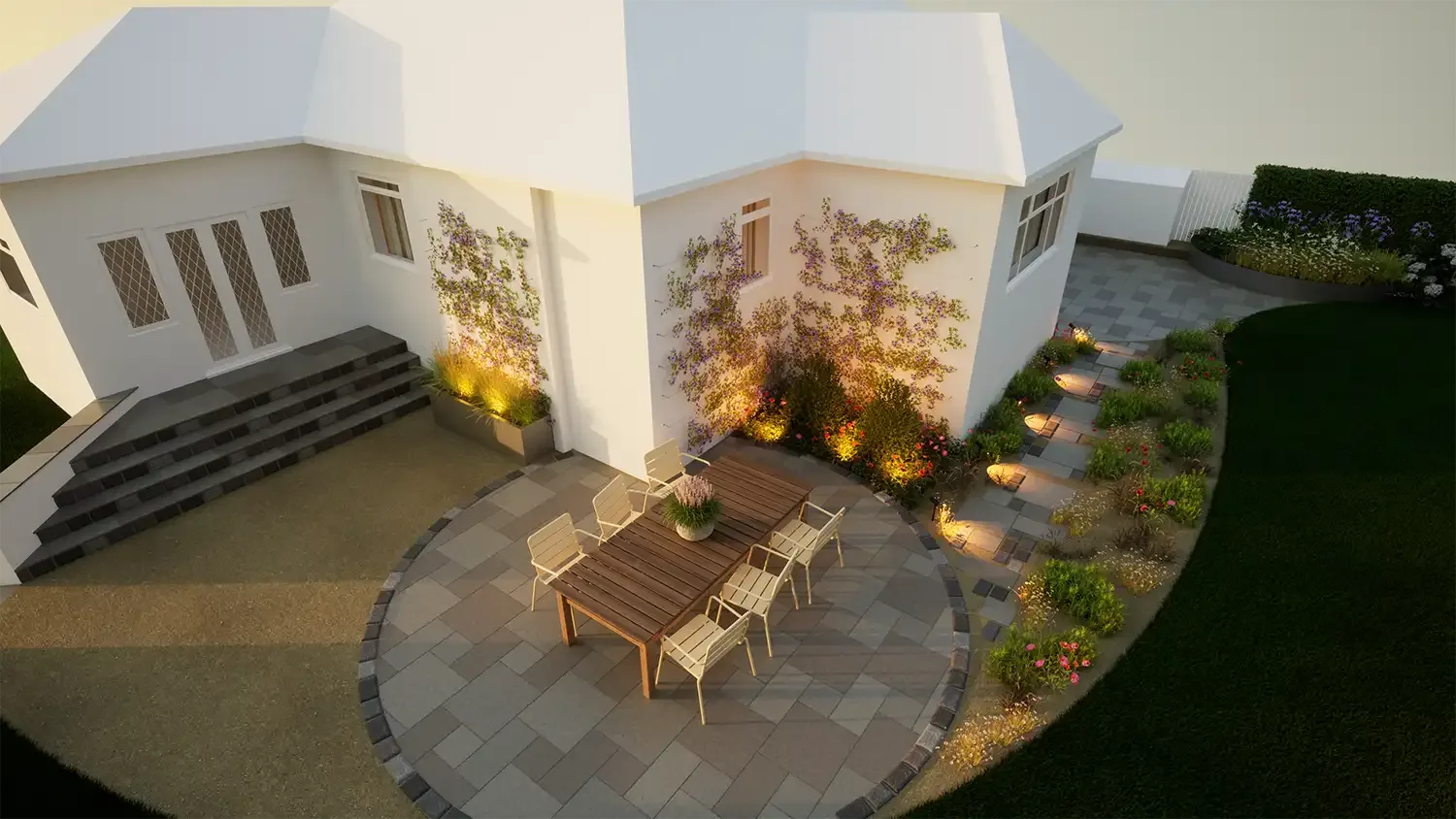
Seasonal Highlights: From Winter Wonders to Autumn Splendour
Exploring the Unique Beauty of Each Season in the Garden with select plants, different flower varieties, and a variety of plant types. Discover the vibrant colors and textures of new plants throughout the year.
Gardens are a place of ever-changing beauty, with each season bringing its own unique charm. From the delicate blossoms of spring to the vibrant foliage of autumn, there is always something to admire and enjoy. By designing your garden with the different seasons in mind, you can create a space that looks good all year round.
Highlighting Winter-Interest Plants and Features
Winter may be seen as a dormant period for many gardens, but it doesn’t have to be devoid of interest or colour. By selecting plants that thrive in colder temperatures and have interesting features, you can bring life and beauty to your winter garden. Consider evergreen trees and shrubs that provide structure and form throughout the year. Incorporate plants with striking bark or berries that add visual interest during the colder months. Ornamental grasses can also provide texture and movement when other plants lie dormant.
Showcasing the Vibrant Colours of Autumn Foliage
Autumn is a season renowned for its stunning display of colourful foliage. By carefully choosing trees and shrubs known for their vibrant autumn hues, you can create an enchanting tapestry of reds, oranges, yellows, and purples in your garden. Japanese maples (Acer palmatum) are particularly prized for their fiery red leaves, while dogwoods (Cornus spp.) offer brilliant shades of orange and burgundy. Consider planting deciduous trees such as birch (Betula spp.) or oak (Quercus spp.), which boast rich golden tones.
In addition to selecting specific plants for each season’s highlights, there are other design elements you can incorporate into your garden to enhance its appeal throughout the year:
- Structural elements: Incorporate hardscaping features like trellises, archways, or pergolas to provide visual interest and define different areas of your garden. These elements can be adorned with climbing plants that add colour and texture.
- Seasonal containers: Planting seasonal containers allows you to easily update the look of your garden with each passing season. Consider using pots or planters filled with flowers that bloom during specific times of the year, such as tulips in spring or chrysanthemums in autumn.
- Perennial borders: Designing perennial borders ensures that your garden has a consistent display of blooms throughout the seasons. By selecting a variety of plants with staggered flowering times, you can enjoy continuous bursts of colour from spring through autumn.
By carefully selecting plants and incorporating design elements that highlight the unique beauty of each season, you can create a garden that looks good all year round. Whether it’s the delicate blossoms of spring, the lush greenery of summer, the vibrant foliage of autumn, or the structural interest of winter, every season brings something special to admire in your outdoor space.
Furniture and Accessories for Seasonal Adaptability
Choosing furniture and accessories for your garden room that can withstand different weather conditions is essential. When hardscaping your garden, it’s important to select plants that are suitable for the specific climate and conditions in your area. Creating a perennial garden ensures that your plants will come back year after year, adding beauty and color to your outdoor space.
When designing a garden that looks good in every season, it’s essential to select furniture and accessories that can withstand various weather conditions. Opting for durable materials such as teak, wrought iron, or aluminium ensures longevity and resilience against rain, wind, and sun exposure. These materials are known for their ability to resist rust, fading, and warping.
Tips for selecting versatile outdoor furnishings
To create a garden that remains visually appealing throughout the year, it’s crucial to choose versatile outdoor furnishings. Consider investing in modular furniture sets that can be rearranged to adapt to different seasons. This flexibility allows you to transform your outdoor space from a cosy seating area during spring and summer into an open layout for gatherings during autumn and winter.
In addition to modularity, consider furniture pieces with removable cushions or covers. This feature enables you to switch between vibrant colours or patterns during warmer months and more muted tones during colder seasons. By changing these small details, you can effortlessly refresh the look of your garden without investing in entirely new furniture.
Incorporating seasonal decorations and accents into the garden
One way to ensure your garden looks good in every season is by incorporating seasonal decorations and accents. During spring and summer, adorn your outdoor space with bright floral arrangements or potted plants bursting with colour. This not only adds visual interest but also complements the natural beauty of blooming flowers.
As autumn arrives, embrace the warm hues of the season by introducing decorative elements such as pumpkins, hay bales, or wreaths made from dried leaves. These additions bring a cozy atmosphere while celebrating the changing foliage.
During winter months when most plants lie dormant, incorporate evergreen elements like pinecones, holly berries, or artificial snowflakes into your garden design. These touches provide a festive ambiance while maintaining visual appeal even in colder months.
Remember to choose decorations and accents that are weather-resistant. Look for materials like resin, metal, or synthetic fabrics that can withstand rain, snow, and wind without deteriorating.
By carefully selecting furniture and accessories that can withstand different weather conditions, choosing versatile outdoor furnishings, and incorporating seasonal decorations and accents into your garden design, you can create a space that looks good in every season. Embrace the beauty of each season by adapting your garden’s aesthetic accordingly.
Maintenance Tips for a Thriving Year-Round Garden
Essential maintenance tasks for each season
To design a garden that looks good in every season, it is crucial to stay on top of essential maintenance tasks throughout the year. In spring, focus on pruning and tidying up any winter damage. Trim back dead branches and remove any debris that may have accumulated. This will help promote healthy growth and ensure your garden starts off the year looking fresh.
During the summer months, regular watering is key to keeping your plants thriving. Be sure to water deeply and consistently, especially during dry spells. Keep an eye out for pests and diseases that may affect your plants’ health. Regularly inspect leaves for signs of damage or infestation and take appropriate action to prevent further spread.
As autumn arrives, it’s time to prepare your garden for the colder months ahead. Clear away fallen leaves and cut back any perennials that have finished blooming. This will help prevent disease and create a tidy appearance in your garden. It’s also a good time to divide crowded plants and transplant any shrubs or trees if necessary.
In winter, focus on protecting your plants from harsh weather conditions. Mulch around the base of trees and shrubs to provide insulation against freezing temperatures. Consider covering delicate plants with frost cloth or burlap to shield them from frost damage. It’s also important to continue watering when needed, as even dormant plants require some moisture.
Strategies for keeping plants healthy throughout the year
To maintain a thriving year-round garden, it’s essential to implement strategies that promote plant health regardless of the season. One key strategy is selecting plant varieties that are well-suited to your climate and soil conditions. Choosing native or adapted species can increase their resilience against extreme weather conditions.
Proper watering techniques are also crucial for plant health throughout the year. Avoid overwatering, as this can lead to root rot and other issues. Instead, water deeply and less frequently to encourage plants to develop deep root systems. This will help them withstand drought conditions and promote overall plant health.
Regular fertilization is another important aspect of plant care. Use a balanced fertilizer or organic compost to provide essential nutrients that may be lacking in your soil. Be mindful of the specific needs of each plant variety, as some may require additional feeding during certain seasons.
Proper care techniques to ensure long-term success
In addition to seasonal maintenance tasks and strategies for plant health, there are several general care techniques that can contribute to the long-term success of your garden. Regularly inspecting plants for signs of disease or pests can help catch issues early on and prevent them from spreading.
Pruning is an essential practice for maintaining healthy plants. Remove dead or diseased branches, shape shrubs, and thin out crowded areas to improve air circulation and promote overall plant vigor.
Finally, don’t forget about soil health! Regularly testing your soil’s pH levels and making necessary amendments can greatly benefit your plants’ growth and productivity. Consider adding organic matter such as compost or well-rotted manure to improve soil structure, fertility, and moisture retention.
By implementing these maintenance tips, strategies for plant health, and proper care techniques, you can design a garden that looks good in every season. With regular attention and care throughout the year, you’ll be rewarded with a thriving garden that brings beauty and joy no matter the time of year.
Embracing Native Plants and Sustainable Practices
Importance of Using Native Plants in Garden Design
Using native plants in garden design is crucial for creating a garden that looks good in every season. Native plants are well-suited to the local climate and soil conditions, making them more resilient and easier to maintain. They have adapted over time to thrive in their specific region, which means they require less water, fertilizer, and pesticides compared to non-native species.
By incorporating native plants into your garden, you can enjoy a variety of benefits. Firstly, native plants provide habitat and food sources for local wildlife such as birds, butterflies, and bees. This not only enhances the biodiversity of your garden but also contributes to the overall health of the ecosystem. Secondly, native plants often have deep roots that help prevent soil erosion and improve water infiltration. This reduces runoff and helps conserve water resources.
Benefits of Sustainable Gardening Practices for Year-Round Gardens
In addition to using native plants, adopting sustainable gardening practices is essential for maintaining a year-round garden that looks good throughout every season. Sustainable gardening focuses on minimizing environmental impact while maximizing aesthetic appeal.
One key aspect of sustainable gardening is proper planting techniques. When introducing new plants to your garden, it’s important to consider their specific needs regarding sunlight exposure, soil type, and moisture requirements. By selecting suitable plant species based on these factors, you can ensure healthier growth and longevity.
Another practice is promoting healthy foliage through regular pruning and trimming. Removing dead or diseased branches not only improves the appearance of your garden but also prevents the spread of pests or diseases that could harm other plants.
Furthermore, sustainable gardening involves using organic fertilizers instead of synthetic chemicals that can be harmful to both humans and the environment. Organic fertilizers enrich the soil with natural nutrients without causing imbalances or pollution.
Ways to Attract Wildlife and Promote Biodiversity in the Garden with different plant types, hardscaping features, and flowers suitable for different zones.
To create a thriving year-round garden, it’s important to attract wildlife and promote biodiversity. One way to achieve this is by incorporating elements that provide food, water, and shelter for various creatures.
Adding bird feeders or planting nectar-rich flowers can attract birds and butterflies, enhancing the beauty of your garden while supporting local wildlife. Creating a water feature such as a small pond or birdbath not only provides drinking water but also serves as a habitat for frogs, dragonflies, and other aquatic life.
Including native plants with different blooming periods ensures a continuous supply of nectar for pollinators throughout the year. This not only benefits the insects but also promotes healthy fruit set in flowering plants.
To further enhance biodiversity, consider leaving some areas of your garden undisturbed. These natural pockets provide shelter for beneficial insects like ladybugs and lacewings, which help control pests naturally.
By embracing native plants and sustainable gardening practices while attracting wildlife and promoting biodiversity in your garden design, you can create a beautiful space that looks good in every season. Not only will you enjoy the visual appeal of your garden throughout the year, but you will also contribute positively to the environment by conserving resources and supporting local ecosystems.
Utilising Professional Guidance and Educational Resources
Seeking professional advice for garden design is a valuable step towards creating a garden that looks good in every season. Garden designers have the expertise and knowledge to help you make informed decisions about plant selection, layout, and maintenance. They can assess your space, understand your preferences, and create a personalised plan that suits your needs.
Online resources and courses provide an excellent opportunity to learn about year-round gardening. There are numerous websites, blogs, and forums dedicated to sharing information on garden design and plant care. These resources offer valuable insights into different gardening techniques, plant varieties suitable for various seasons, and tips for maintaining a beautiful garden throughout the year.
Collaborating with experts is another effective way to design a garden that thrives in every season. By working alongside horticulturists or landscape architects, you can benefit from their extensive knowledge and experience. They can guide you through the process of selecting plants that bloom at different times of the year, choosing complementary colours and textures, and creating a balanced ecosystem within your garden.
When seeking professional guidance or utilising educational resources, it’s essential to consider your specific requirements and goals for your garden. Take into account factors such as climate conditions in your region, available space, sunlight exposure, soil type, and personal preferences. This will help ensure that the advice you receive aligns with your unique circumstances.
By consulting professionals or engaging with online resources or courses focused on year-round gardening techniques, you gain access to expert insights tailored to your specific needs. You can learn about which plants thrive during each season while also discovering ways to maintain visual interest even when certain plants are not in bloom.
In addition to learning from experts or educational platforms online, consider attending local workshops or joining gardening clubs where you can connect with fellow enthusiasts who share similar interests. These communities often host events where experienced gardeners share their knowledge through presentations or hands-on demonstrations.
Remember, designing a garden that looks good in every season is an ongoing process. Regular maintenance, such as pruning, weeding, and fertilizing, is crucial to ensure the health and vitality of your plants. Continuously educate yourself about new gardening techniques and stay updated on the latest trends in garden design.
Conclusion
In designing a garden that looks good in every season, it is crucial to consider a variety of factors. By carefully selecting plants for year-round interest, structuring the garden with evergreens and perennials, and embracing native plants and sustainable practices, you can create a thriving and visually appealing space throughout the year. Incorporating furniture and accessories that are adaptable to different seasons can enhance the overall aesthetic and functionality of your garden.
To ensure the success of your year-round garden, regular maintenance is essential. By following maintenance tips and seeking professional guidance when needed, you can keep your garden flourishing and vibrant in all seasons. Remember to take advantage of educational resources available to further expand your knowledge on garden design and plant selection.
Creating a garden that remains beautiful and enjoyable throughout the year requires careful planning and consideration. With the right approach, you can transform your outdoor space into a haven that brings joy no matter the season. Start implementing these strategies today and watch your garden thrive!
Frequently Asked Questions
How important is it to design a landscape that looks good in every season? When planning your garden, consider incorporating hardscaping elements to create structure and visual interest. Choose a variety of flowers that bloom at different times to ensure color throughout the year. Additionally, divide your garden into zones to maximize the use of space and create distinct areas for different purposes.
Designing a garden that looks good in every season is essential for creating a visually appealing and vibrant outdoor space throughout the year. It ensures that your garden remains beautiful and enjoyable regardless of the changing seasons, providing year-round interest and delight.
What types of plants should I choose for year-round interest in my garden’s landscape? From vibrant flowers to hardscaping elements, it’s important to consider the different zones and seasons when selecting plants.
To achieve year-round interest, select a combination of plants with different blooming periods, foliage colours, and textures. Choose evergreen shrubs and trees for structure, incorporate perennials with varying flowering times, and consider using ornamental grasses or winter-blooming plants to add visual appeal during colder months.
How can I create a four-season garden plan?
Creating a four-season garden plan involves carefully selecting plants that offer interest during each season. Start by identifying which plants thrive in your local climate throughout the year. Consider their growth habits, bloom times, foliage colours, and textures when planning their placement in your garden to ensure a continuous display of beauty across all seasons.
Which types of plants are suitable for structuring gardens with hardscaping, evergreens, perennials, and flowers?
When structuring gardens with evergreens and perennials, choose evergreen shrubs like boxwood or yew for maintaining structure throughout the year. Complement them with perennial flowers such as daylilies or coneflowers to add seasonal colour. This combination provides both stability and variety to your garden’s overall design.
What are some maintenance tips for a thriving year-round garden with season landscape and season interest? Incorporating hardscaping and a variety of flowers can enhance the overall beauty and longevity of your garden.
To maintain a thriving year-round garden, regularly prune any dead or diseased plant parts to promote healthy growth. Mulch around plants to retain moisture and control weeds. Provide adequate watering based on each plant’s needs. Remove fallen leaves promptly during autumn to prevent disease spread.
Other Posts
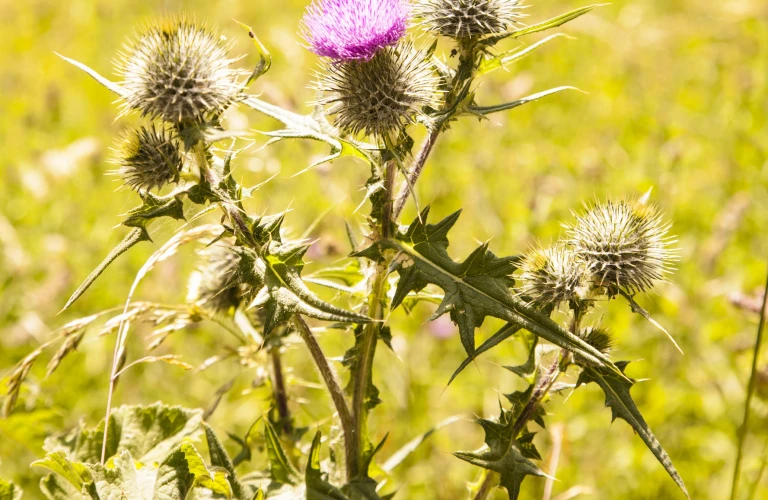
Native Planting Schemes for Glasgow Gardens
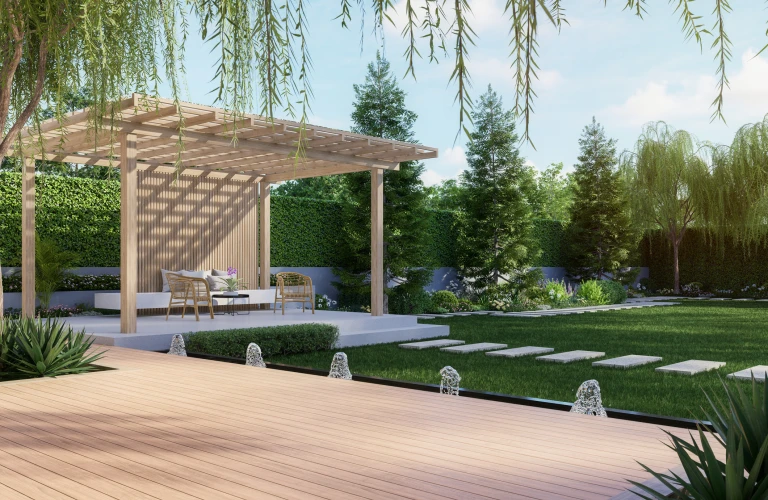
The Impact of Gardens on Property Value
